Garlic (Allium sativum L.) is an important bulb crop grown throughout India as a masala or spice. Garlic cultivation is an excellent agricultural business if done well. Garlic farming can be very profitable as Garlic is one of the most profitable crops.
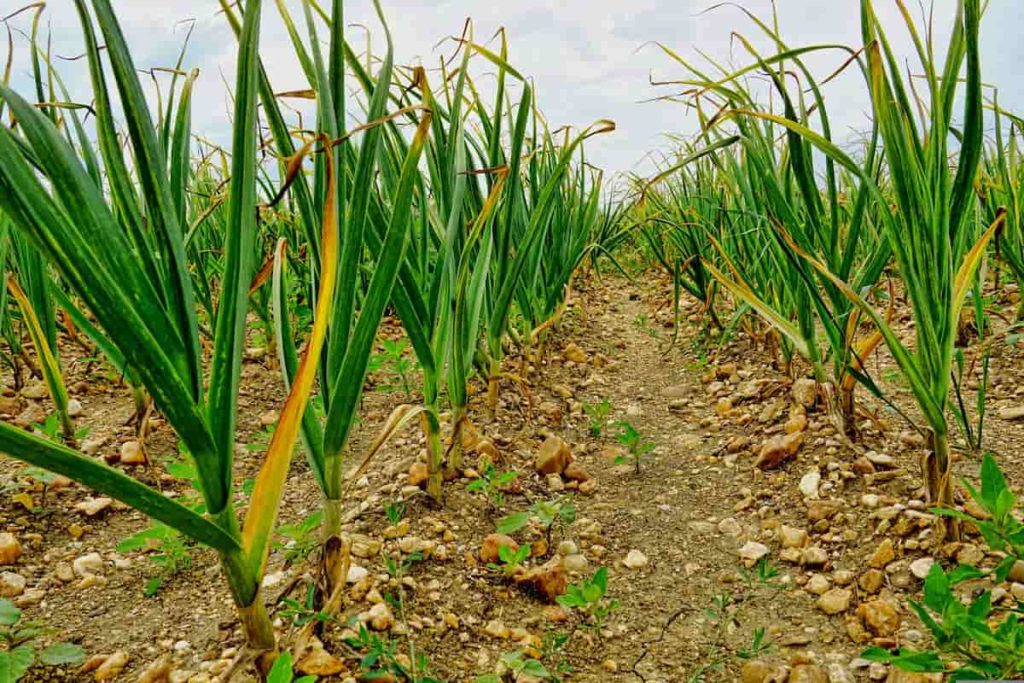
The Garlic farming business is a profitable business, which provides income to thousands of entrepreneurs, but before going into this type of business, you need to consider some essential factors. Firstly, you need to decide on the size of your business. The location, the type of plants you plan to grow, and your target market. This fragrant and attractive plant is your answer to a successful farming business with a limited budget and space.
Garlic farming business plan
High-yielding varieties for Garlic farming
These are high-yielding and disease-resistant Garlic used in commercial Garlic cultivation. The best Garlic varieties are Agrifound White, Yamuna Safed, Godavari, Shweta, GG-4, Phule Baswant, Yamuna Safed 2, Yamuna Safed 3, VL Garlic 1, VL Lahsun 2, Ooty 1, Agrifound Parvati, Agrifound Parvati 2.
Select the best Garlic seeds for your climate
There are different types of Garlic, but they can generally be divided into three varieties.
- The Softneck Garlic plant grows best in mild winters and does not form Garlic cloves. As a result, Softneck varieties have a stronger flavor. Popular varieties include Creole and Artichoke.
- The Hardneck Garlic plant is better suited to handle cold weather and always produces scapes in early summer. They have a tough, woody stem and large bulbs with a much milder flavor and less cloves. Unfortunately, they do not tend to store for long. Some popular varieties include porcelain, purple stripe, and rocambole varieties.
- Elephant Garlic produces large, mild-flavored bulbs with no more than six cloves. This variety is hardy enough to zone 5 if mulched deeply in winter.
Machinery and equipment for a Garlic farming business
To grow Garlic successfully, you will need a variety of machinery and equipment. Land preparation will require varying levels of mechanization. Small pieces of land can be prepared with hand-held tools without much trouble. In rural areas, the use of animal-made implements may be helpful. However, a large-scale Garlic farming business will require machinery and equipment such as tractors, fertilizer spreaders, sprayers, diggers, harvesters, and irrigation equipment.
You don’t have to buy all of these items. Other essential requirements, such as power generation, should be prepared for some operations, such as irrigation, that require electricity. You can incorporate the use of a fuel pump or harnessing solar energy. You may also need standby generators to cushion yourself against extended power outages. Your Garlic farming business plan should cover these and other expenses related to machinery and equipment.
Ways to get profit in the Garlic framing business
Climate and soil
It is grown under different climatic conditions. However, it cannot tolerate very hot or very cold weather. It prefers moderate temperatures in summer as well as winter. Short days are very favorable for bulb formation. Garlic needs well-drained loamy soil, rich in humus, with a lot of potash. Crops grown on sandy or loose soils are soiled, the bulbs produced are damaged, and many bulbs are broken and bruised during harvest and hence do not store well.
It requires a short-day, cool (12–18°C) moist period during vegetative growth. A dry soil rich in organic matter with a pH range of 6-7 is ideal. Highly acidic and heavy soils are not suitable for this crop. Garlic crops grown on sandy or loose soils have poor preservation quality, and the bulbs produced are light in weight.
The land is an essential requirement and should be suitable for Garlic cultivation. As a general rule, conditions suitable for Garlic production are also suitable for Garlic production. To be profitable in Garlic farming, you must maximize yield through good agricultural practices. Apart from this, the fertility of the land is also essential. Using rotted leaves, compost, or animal manure as organic matter is highly recommended to increase soil fertility.
Propagation
Garlic is propagated by cloves. Once all the cloves are planted in the center of the bulb except the long thin one. Bulbs with side growth should be discarded. Healthy cloves or bulbs free from disease and injury should be used for sowing, and about 150 to 200 kg of cloves are required for planting in one hectare. They are sown by using dibbling or furrow planting.
Dibbling
The field is mainly divided into small plots convenient for irrigation. Cloves can be planted 5 to 7.5 cm deep, with their growing ends facing up and spaced 7.5 cm apart, packed in rows at a distance of 15 cm, and then covered with loose soil. June-July and October-November are the regular planting seasons for Garlic.
In case you missed it: Hydroponic Garlic Farming, Planting, Growing Procedure
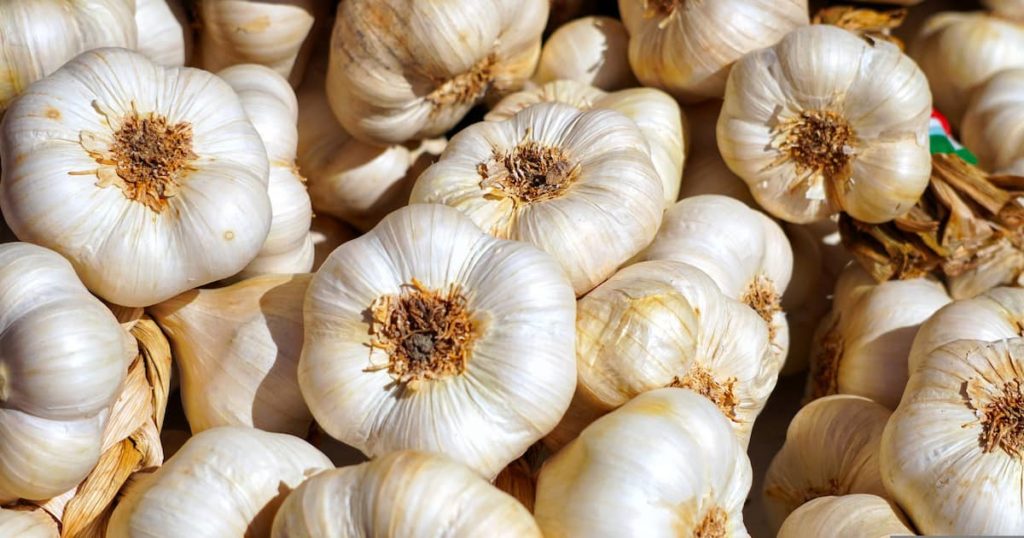
Furrow planting
Furrows are made 15 cm apart by hand or with a cotton drill. In these skins, cloves are left by hand at a distance of 7.5 to 10 cm. They are lightly covered with loose soil and lightly irrigated.
Mulching
Garlic mulching can be critical to its success. You can use wood chips, compost, or hay to suppress weeds and increase soil quality and nutrients to benefit your crops. Unfortunately, you don’t want your mulch to sit so much on bulbs that it causes them to retain too much moisture and rot. As a result, some people remove their Garlic mulch in wet years, especially when signs of stem rot (browning and thinning around the base of the plant) become apparent.
Irrigation
The field should be lightly irrigated before planting. Garlic cultivation uses furrow irrigation, drip irrigation, and sprinkler irrigation methods. Irrigation is repeated every third day during the initial stages. The crop is irrigated once a week at most, but later, the crop is irrigated once in 15 days. Frequency decreases and the crop reaches maturity when irrigation is stopped at harvest.
Intercultural operations
The first intercultural is given by hand hoe one month after sowing. A second weeding a month after sowing (about two and a half months after sowing) helps loosen the soil and set large and well-filled bulbs. However, the crop should not be weeded or dug up at a later stage as this may damage the stem and impair keeping quality.
Weed management
Garlic is a weak competitor against weeds, so take appropriate measures before planting to minimize weed pressure. Applying thick bedding 2-4 weeks before planting and using clean, weed-free straw mulch can significantly reduce weed pressure. Remove the mulch in the spring season to allow for mechanical farming, although this may result in increased irrigation needs.
Common pests and diseases of Garlic
Onion thrips are major pests in Garlic. Adults and larvae overwinter in clover, alfalfa, and small grain fields. In addition, several diseases affect Garlic, including basal rot (fusarium), white mold (sclerotinia), and occasionally botrytis. Longer crop rotations and the cultivation of disease-free stock will limit most of these diseases.
In case you missed it: Polyhouse Garlic Farming (Vellulli), Cultivation Practices
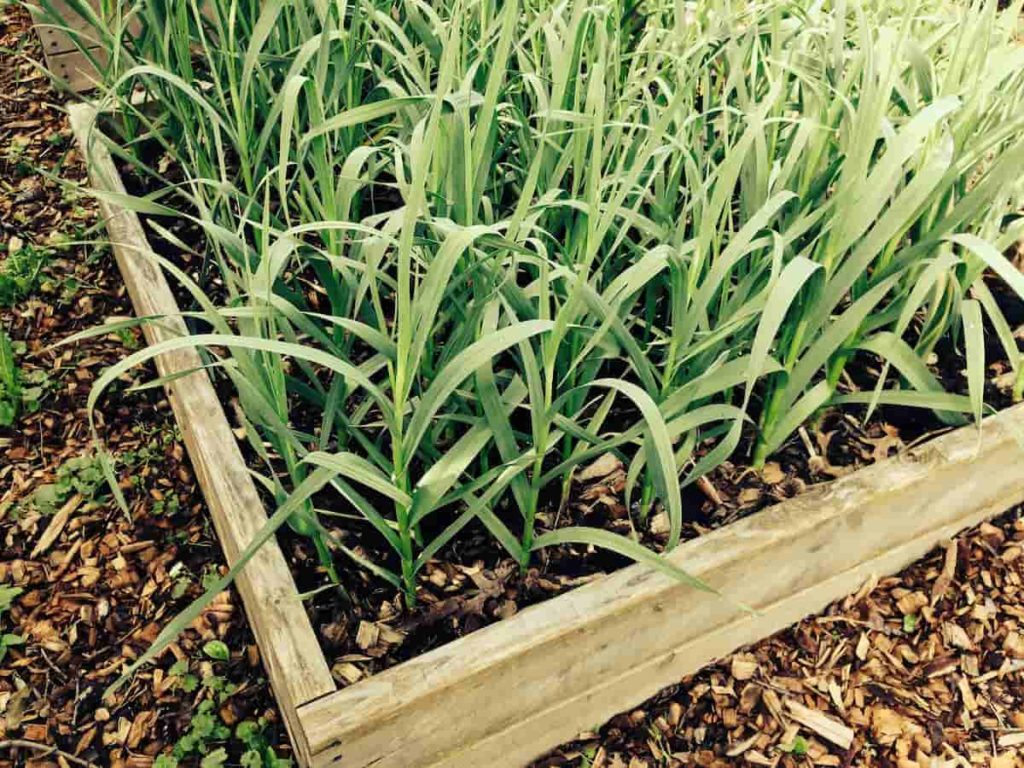
Simple steps to start a profitable Garlic business
Research
The first thing you need to do is do some research. Find out what types of Garlic people are looking for. Then, if you can increase what you sell, you may see a lot of business. It is true for any business and certainly for a Garlic business: you need to sell something that people want to buy.
Know about Garlic planting tips
For Garlic planting, select individual cloves. Generally, larger cloves are ideal for planting and reject smaller lots. Reduce the chance of fungal diseases by soaking the cloves in a chemical solution such as carbendazim before planting.
Plant the biggest cloves
The biggest heads of Garlic grow from the largest cloves of Garlic. Larger Garlic cloves have more energy reserves to help your Garlic get off to a good start. When separating cloves for planting, choose the largest cloves to grow Garlic heads, and use smaller cloves to grow spring green Garlic.
Harvest only in the spring when the leaves have grown, and use Garlic cloves. If you’ve saved some of your cut Garlic to plant, pick your larger heads for Garlic seed and eat the smaller heads. Although the bigger ones are hungrier, if you choose bigger heads to plant this year, you’ll have more big heads to plant and eat in future years.
Go organic
It’s a no-brainer to understand this simple fact that drives consumer demand. With the growing popularity of healthy eating, more and more people are buying organic vegetables and fruits. So, invest some money in the initial stage of cultivation using organic fertilizers and healthy practices and become an organic Garlic farmer.
Keep increasing production
If you feel that you have made a good profit within a year of starting the business, start preparations to take your business to the next level. Expand your horizons with internet sales if you have a wide organic Garlic distributor network. Create your website and start selling Garlic online.
You can check food magazines and contact reputable restaurants with large quantities of Garlic. Differentiate from others by growing your produce biodynamically. You want healthy Garlic that people want to buy. Make sure your Garlic is growing in healthy soil. Use only organic products, such as organic fertilizers. Organically grown Garlic is better and often sold at a higher price.
Grow what people want
It’s a simple process, and be sure to stick to it—grow what varieties people want to buy. So, for first-time growers, avoid the standard Garlic you’ll find in every supermarket and only grow gourmet varieties, such as Rocambole or Elephant Garlic variety. Before buying Garlic bulbs, do some research. If you can grow it to your liking, your Garlic will sell well.
In case you missed it: Garlic Cultivation Income; Cost; Profit; Project Report
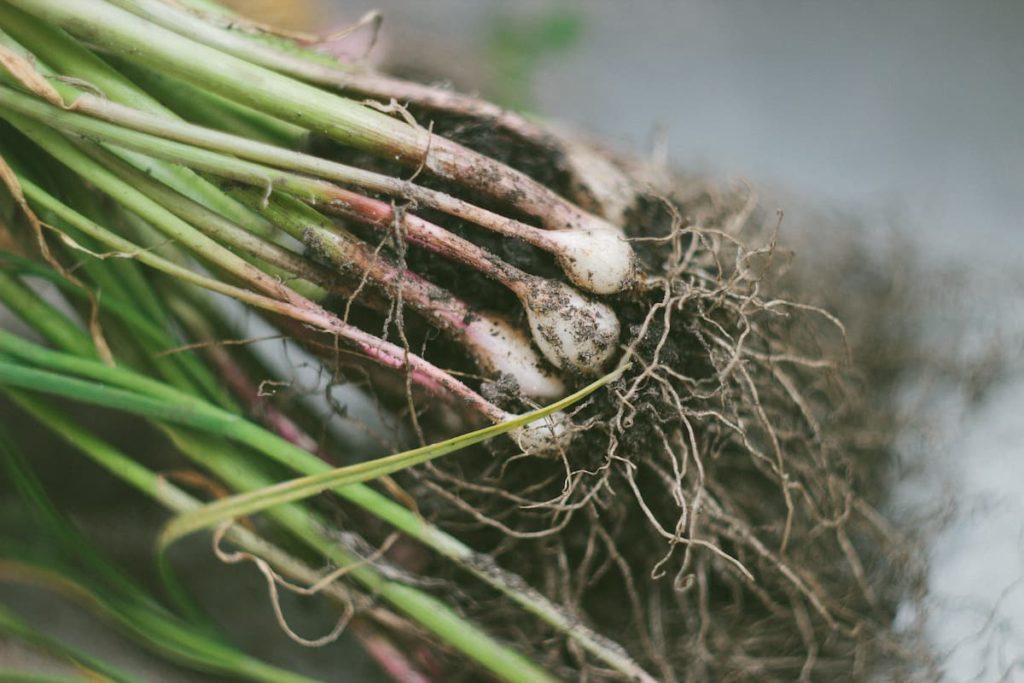
Apply the best irrigation method
Garlic is a bulb crop that produces shallow roots. So, the plant needs a good amount of moisture – more than water. Perhaps the biggest challenge in growing Garlic is being able to ‘moisturize it properly.’ In other words, the soil must contain enough water to maintain a good moisture level. However, too much water will cause water stress, and thus, the bulbs will split. Too low water or moisture levels mean underdeveloped bulbs. The best method is to irrigate the crop frequently. It must be irrigated:
- Immediately after planting
- At intervals of about 1 week to 10 days, depending on the moisture content of the soil.
The best method to irrigate Garlic is by using modern techniques like sprinkler and drip irrigation. It helps in improving productivity considerably. In drip irrigation, the discharge rate of the emitters should be 4 liters per hour. This flood system helps in 15-25% better yield than irrigation. Sprinklers should have a discharge rate of 135 liters per hour.
Farmers markets
Farmer’s markets are popular events that attract people eager to find the best local produce from the best local growers. Set up a stall or stand, and put your Garlic on display. Consider adding a sign-up sheet for a mailing list to keep in touch with your customers. Farmer’s markets can fill up quickly, so if you’re not able to rent a stand or stall, consider asking another farmer if you can share it with them.
Create value-added products
Creating value-added products is your chance to get creative with Garlic. You can make many products with Garlic. You can also make deer repellent. It can make an excellent natural flea repellent. There are lots of fun products that can make you a lot of money.
Harvesting
Depending on the variety, it is ready to harvest within 120-150 days of sowing. They are ready when the leaves begin to turn yellow and dry. The bulbs are removed, the sheath around the bulb is cut, and the roots are trimmed. After that, they are dried in the sun for a week. This process is essential for the bulb to harden. They are graded based on size and weight before storage.
Marketing
Garlic is in high demand in the local and international markets. Garlic is widely used in cooking. It adds flavor to dishes such as stews, soups, and salads. Some Garlic consumers include individuals, caterers, restaurants, food processors, supermarkets, national fresh produce markets, etc.
In case you missed it: Organic Garlic Planting; Growing; Harvesting Technology
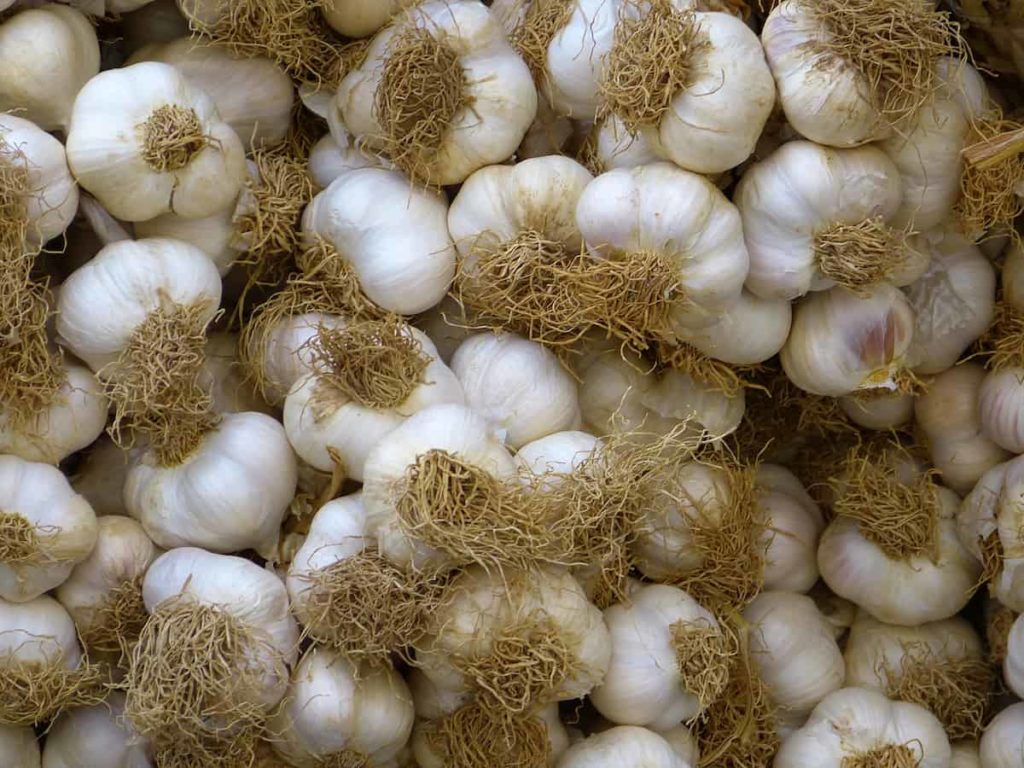
Yield and profit in Garlic crop
The yield of Garlic depends on many factors, such as water, type of Garlic, season, and soil fertility. The cost of Garlic production on 1 acre of land is approximately Rs.27000. Farmers can get an average yield of 32-48 quintals from one acre of land. The market price of Garlic is Rs 5000 per kg. This way, farmers can earn about 2 lakh rupees from 1 acre of Garlic cultivation.
Frequently asked questions about Garlic business (FAQ)
In which month is Garlic cultivated?
June-July and October-November are the regular planting seasons for Garlic.
What is the best Garlic to grow?
Elephant Garlic, Purple Stripe, and Rocambole are the three most profitable types of Garlic grown.
Is Garlic easy to grow?
Growing Garlic plant in the home garden is easy. However, maintaining high quality requires care and attention. Weeding is essential because Garlic does not like competition. Watering and not watering, timely pruning, and proper curing are all important to producing bulbs with good capping properties.
Does Garlic need a lot of water?
Too little water can stress the Garlic plants, and too much water can cause bulb rot. In ideally drained soil, Garlic needs between an inch and a half and an inch of water per week. If less than half an inch of rain falls in a week, make up the difference with additional water. Deep watering is best but infrequent.
What is the best fertilizer for Garlic?
Fertilize Garlic in early spring with a side dressing, blood meal, shredded chicken manure, or an artificial nitrogen source.
In case you missed it: Garlic Diseases, Pests and Control Methods
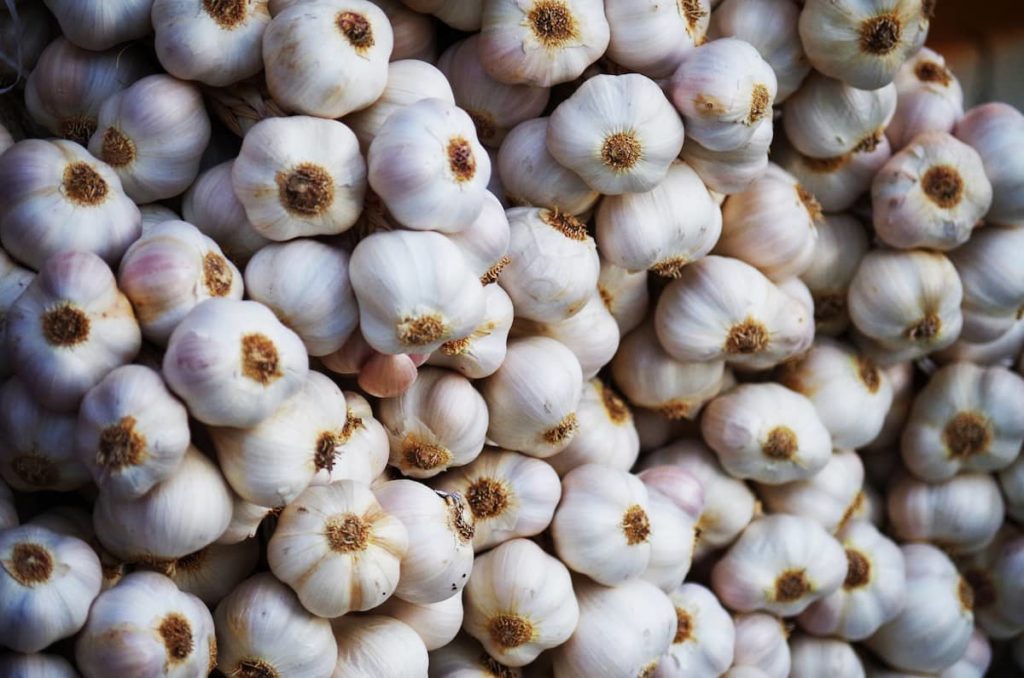
Does Garlic need full sun?
When choosing a suitable location, remember that Garlic prefers a location in full sun with well-drained, light soil.
How to increase Garlic production?
Temperature or drought stress can significantly impair growth if occurring during critical periods. Plant density and spacing are essential in determining onion and Garlic bulb size and number. Yields are high where early leaf cover is developed and maintained for long periods before bulb formation.
Why are my Garlic plant leaves turning yellow?
The yellowing of Garlic leaves indicates an environmental factor causing stress on the plant. Therefore, accurately identifying the cause is the first step to remedying the situation. Yellowing Garlic leaves are the most common causes of cold temperatures, diseases, pests, poor plant care, nutrient deficiencies, and soil problems.
Yellowing Garlic leaves are the most common cause of cold temperatures, diseases, pests, poor plant care, nutrient deficiencies, and soil problems.
Conclusion
Garlic farming is a thriving business that is constantly growing. There are many ways to make a profit from the Garlic business. Garlic is more nutritious than other bulb crops. Garlic is an excellent low-maintenance cash crop. Garlic farming is known to be a profitable business.
- Economical Aquaculture: A Guide to Low-Budget Fish Farming
- 15 Common Planting Errors That Can Doom Your Fruit Trees
- How to Make Houseplants Bushy: Effective Tips and Ideas
- Innovative Strategies for Boosting Coconut Pollination and Yield
- Pollination Strategies for Maximum Pumpkin Yield
- The Complete Guide to Chicken Fattening: Strategies for Maximum Growth
- Natural Solutions for Tulip Problems: 100% Effective Remedies for Leaf and Bulb-Related Issues
- Revolutionizing Citrus Preservation: Towards a Healthier, Greener Future
- Natural Solutions for Peony Leaf and Flower Problems: 100% Effective Remedies
- Maximizing Profits with Avocado Contract Farming in India: A Comprehensive Guide
- Natural Solutions for Hydrangea Problems: 100% Effective Remedies for Leaf and Flowers
- The Ultimate Guide to Choosing the Perfect Foliage Friend: Bringing Life Indoors
- From Sunlight to Sustainability: 15 Ways to Use Solar Technology in Agriculture
- The Ultimate Guide to Dong Tao Chicken: Exploring from History to Raising
- The Eco-Friendly Makeover: How to Convert Your Unused Swimming Pool into a Fish Pond
- Mastering the Art of Delaware Chicken Farming: Essentials for Healthy Backyard Flocks
- 20 Best Homemade Fertilizers for Money Plant: DIY Recipes and Application Methods
- How to Craft a Comprehensive Free-Range Chicken Farming Business Plan
- Brighten Your Flock: Raising Easter Egger Chickens for Beauty and Bounty
- How to Optimize Your Poultry Egg Farm Business Plan with These Strategies
- Subsidy for Spirulina Cultivation: How Indian Government Schemes Encouraging Spirulina Farmers
- Ultimate Guide to Raising Dominique Chickens: Breeding, Feeding, Egg-Production, and Care
- Mastering the Art of Raising Jersey Giant Chickens: Care, Feeding, and More
- Ultimate Guide to Raising Legbar Chickens: Breeding, Farming Practices, Diet, Egg-Production
- How to Raise Welsummer Chickens: A Comprehensive Guide for Beginners
- How to Protect Indoor Plants in Winter: A Comprehensive Guide
- Ultimate Guide to Grow Bag Gardening: Tips, Tricks, and Planting Ideas for Urban Gardeners
- Guide to Lotus Cultivation: How to Propagate, Plant, Grow, Care, Cost, and Profit
- Agriculture Drone Subsidy Scheme: Government Kisan Subsidy, License, and How to Apply Online
- Ultimate Guide to Raising Araucana Chickens: Breed Profile, Farming Economics, Diet, and Care
- Bringing Hydroponics to Classroom: Importance, Benefits of Learning for School Students
- Ultimate Guide to Raising Polish Chickens: Breed Profile, Farming Economics, Diet, and Care
- Ultimate Guide to Raising Australorp Chickens: Profile, Farming Economics, Egg Production, Diet, and Care
- Silkie Chicken Farming: Raising Practices, Varieties, Egg Production, Diet, and Care
- Sussex Chicken Farming: Raising Practices, Varieties, Egg Production, Diet and Care
- Homemade Feed Formulations for Livestock: Discover Cost-effective Starter to Finisher Feed Recipes